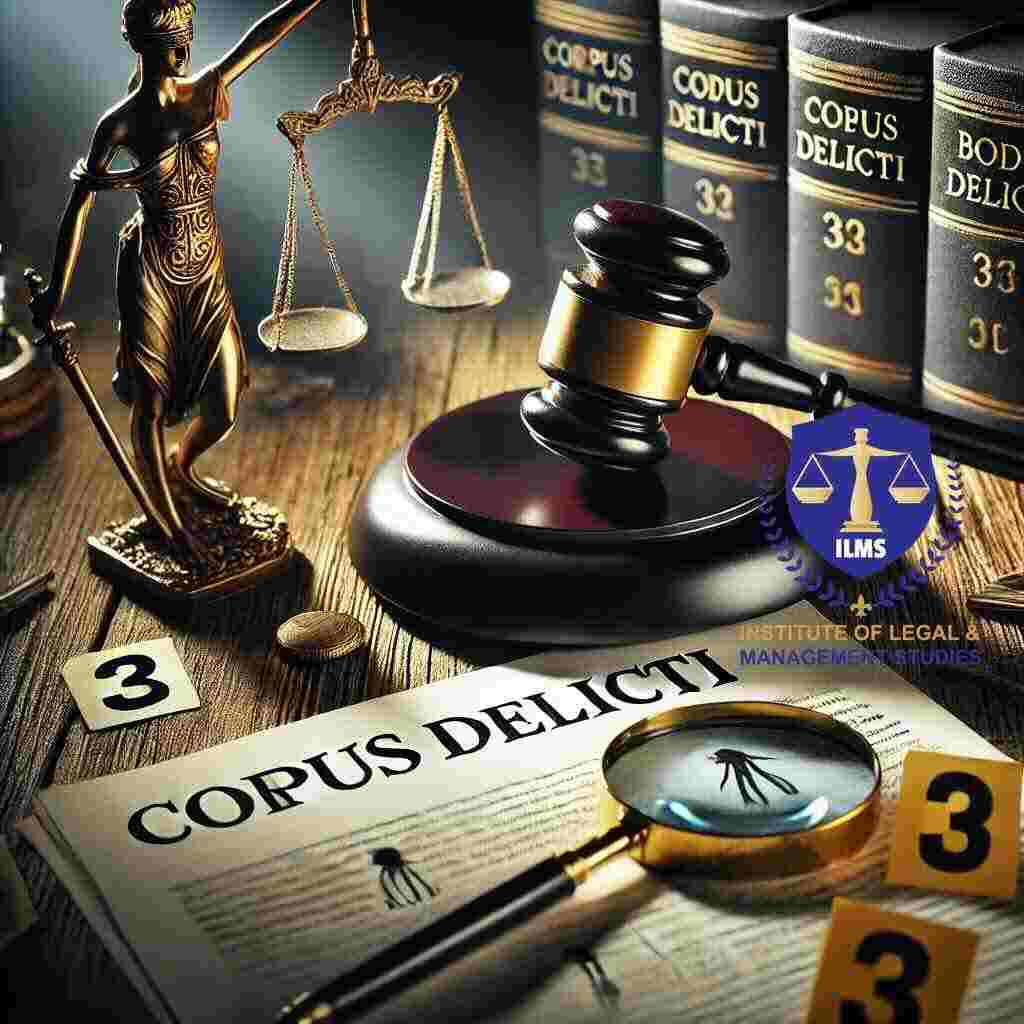Table of Contents
- Introduction
- Meaning of Corpus Delicti
- Elements of Corpus Delicti
- Application in Criminal Law
- Rationale Behind Corpus Delicti
- Illustrative Examples
- Relevant Case Laws
- Conclusion
Introduction
The legal doctrine of Corpus Delicti plays a crucial role in criminal prosecutions. The term, which translates from Latin as “Body of the Crime,” refers to the necessity of proving that a crime has occurred before convicting someone of committing it. This principle prevents wrongful convictions based solely on confessions without supporting evidence.
This article examines Corpus Delicti, its essential elements, application in criminal law, and relevant case laws.
Meaning of Corpus Delicti
In criminal law, Corpus Delicti means proof that a crime has been committed. The doctrine requires that evidence establish:
- That a criminal act has occurred.
- That the act resulted from someone’s unlawful actions.
Definition
- Black’s Law Dictionary: “The substantial fact that a crime has been committed.”
- Legal Interpretation: “A principle requiring the prosecution to present proof that a crime has been committed before a person can be convicted.”
Thus, Corpus Delicti ensures that individuals are not wrongfully convicted based solely on their statements.
Elements of Corpus Delicti
To establish Corpus Delicti, two essential elements must be proven:
-
Proof that harm or loss has occurred
- A crime must have taken place, such as a murder, theft, or arson.
- Example: A missing person is not enough to prove murder; evidence of foul play must exist.
-
Proof that the harm resulted from a criminal act
- The harm or injury must have resulted from an unlawful act rather than natural causes or accidents.
- Example: If a house burns down, it must be proven that arson caused the fire, not an electrical fault.
The prosecution must establish these elements before securing a conviction.
- Certificate Course in Labour Laws
- Certificate Course in Drafting of Pleadings
- Certificate Programme in Train The Trainer (TTT) PoSH
- Certificate course in Contract Drafting
- Certificate Course in HRM (Human Resource Management)
- Online Certificate course on RTI (English/हिंदी)
- Guide to setup Startup in India
- HR Analytics Certification Course
Application in Criminal Law
The principle of Corpus Delicti is applied in various criminal offenses:
-
Homicide Cases
- A dead body or sufficient circumstantial evidence must prove that murder has occurred.
- Courts often require forensic evidence, medical reports, or eyewitness testimony.
-
Theft Cases
- The prosecution must show that property was stolen and that it was taken unlawfully.
-
Arson Cases
- Evidence must confirm that a fire was intentionally set, not accidental.
-
White-Collar Crimes
- Financial crimes require proof of fraudulent transactions or embezzlement.
Without Corpus Delicti, convictions based solely on confessions are unreliable.
Rationale Behind Corpus Delicti
The Corpus Delicti rule serves several legal and ethical purposes:
-
Prevents False Convictions
- Ensures that people are not convicted without concrete evidence.
-
Discourages Coerced Confessions
- Prevents the state from relying on forced or false confessions.
-
Upholds the Presumption of Innocence
- Requires the prosecution to prove the crime rather than forcing the accused to prove innocence.
-
Maintains Legal Integrity
- Ensures that convictions are based on objective evidence.
These principles strengthen the fairness of the criminal justice system.
Illustrative Examples
Here are some real-world examples illustrating Corpus Delicti:
- Example 1: A man confesses to murder, but no body is found, and no forensic evidence confirms the crime. His confession alone cannot secure a conviction.
- Example 2: A building burns down. Investigators must prove arson rather than assuming criminal activity.
- Example 3: A person claims to be a victim of robbery. The prosecution must show that a theft occurred and that force or deception was involved.
Relevant Case Laws
Several landmark cases demonstrate the application of Corpus Delicti in criminal law:
-
R v. Onufrejczyk (1955) – UK
- The court ruled that a conviction could be based on circumstantial evidence even if a body was not found.
-
Perry v. New Hampshire (2012) – USA
- Addressed the issue of wrongful conviction based on eyewitness testimony without strong Corpus Delicti.
-
State of Maharashtra v. Damu (2000) – India
- The Supreme Court emphasized that even in cases where a body is not recovered, circumstantial evidence can prove Corpus Delicti.
-
People v. Jennings (1991) – USA
- The court ruled that a mere confession without corroborating evidence is insufficient for conviction.
These cases affirm that courts require strong evidence beyond confessions.
Conclusion
The doctrine of Corpus Delicti is a fundamental safeguard in criminal law, ensuring that no one is convicted without proof that a crime occurred. By requiring objective evidence, it prevents false confessions, wrongful convictions, and miscarriages of justice.
Courts rely on this principle to uphold fair trials and protect the innocent while ensuring that guilty individuals are convicted based on solid evidence.
- Certificate Course in Labour Laws
- Certificate Course in Drafting of Pleadings
- Certificate Programme in Train The Trainer (TTT) PoSH
- Certificate course in Contract Drafting
- Certificate Course in HRM (Human Resource Management)
- Online Certificate course on RTI (English/हिंदी)
- Guide to setup Startup in India
- HR Analytics Certification Course

